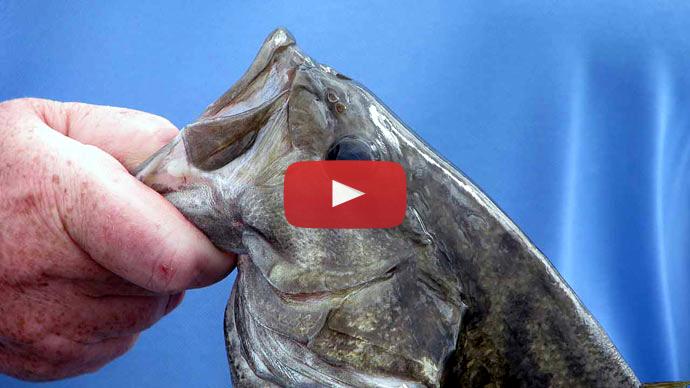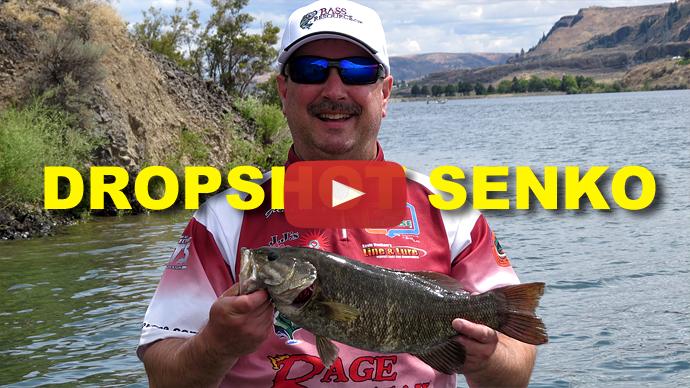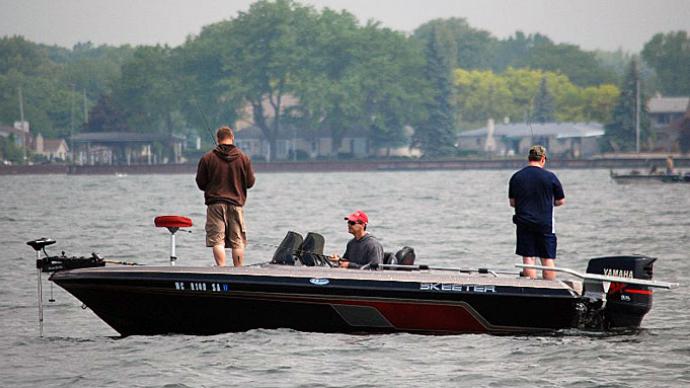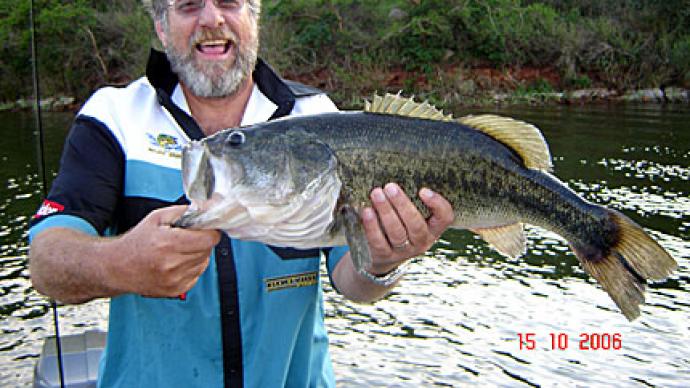Hey, Bass Resource fans, Mike Iaconelli here. I want to talk to you about dropshotting. I'm going to go over three things you need to do to really become a better dropshot fisherman and understand dropshotting.
The first one is probably the most simple thing you're ever going to hear, but it's one of the most important. That is actually not moving the bait. It's a really hard thing to do because, in fishing, for years and years, we've been taught to make a cast, to use our rod and our reel to impart action on the bait. But in dropshotting, it's really the essence of neutral action, or natural movement.
The first thing in dropshotting I want you to do is that when you make a cast and you get that bait down to where you're fishing, instead of shaking your rod, or dragging, or hopping it, I want you to just leave it there. Just hold it in place.
I know what you're thinking. You're thinking, "Why am I going to do that? The bait's not going to move." It's going to move, if you think about it. First of all, we've got current. There's current in every body of water we fish. Obviously, if it's a river, there's current, man-made reservoirs, there's current, but even in natural lakes, even in a little pond, there's current. Things like wind. Things like boat traffic. All that creates a natural current. So the bait's sitting on the bottom without you moving it, it's going to have a very neutral, natural movement.
The other thing is we all move inherently. If you take your hand and you put it in front of you and you look at it, nobody's perfectly still. We all have a little shake to us and when you cast that bait out there, you let it get to the bottom and you just hold it there, that natural movement of your hand is transmitted through the rod, down the line to the bait, and it's going to impart that subtle movement of the bait. The first tip for dropshotting is, "Don't move the bait." Make a cast and let it sit on the bottom.
The second tip I have for dropshotting, and it's an important one, is the hook set after you get that bite. This is a hard one for me personally because I love jacking fish. It's one of my favorite things in the world to do, is to have a big jig, or a big worm and then to jack those fish, to rip those fish. In dropshotting, you've got to get away from that mentality. I want you to use a hookset technique called a sweep set technique.
Basically, in a sweep set technique, you're not jacking the fish. You're not ripping the fish, but you're gently reeling into that bite. When you're dropshotting and you've got the bait out there and you're not moving it and all of a sudden you get that bite and he starts swimming away, hold yourself back. Don't jack that fish.
When you feel that movement of that fish going away, I want you to get your body, get your rod and sweep your rod to the side. At the same time, step back. When you do that, your rod's going to load up and that little hook, whatever kind of hook you're using, is going to get into that fish's mouth and you're going to have that fish hooked. Stop yourself from jacking that fish. Step back and sweep your rod and 99.9% of the time you're going to hook that fish up and he's going to be in the boat. Tip number two, "Don't jack the fish." Sweep step into them and that fish is going to get in the boat.
The last tip I want to give you is real important when you're fishing dropshot in deeper water. This is using your electronics as your underwater eyes. In its simplest form, when you're in shallow water, or you're in super clear water, you can use your eyes. You put on your polarized glasses, you see a fish swimming, you throw that dropshot to him, you catch him. When you're in deep water, when you're in dirty water, off colored water, when you're in 30, 40, 50 feet, you can't see those fish with your eyes, your physical eyes, but you're going to use your electronics to see those fish. I want you to use your graph. I want you to mount that transducer on the foot of your trolling motor. I want you to turn your sensitivity up and, finally, I want you to turn your ping speed up. Every depth finder in the world, whether it's Lowrance, or some other brand, you're going to be able to go in and turn your ping speed to its maximum setting. When you do that, you're going to get real time response from your depth finder.
When you're in that deep water, dirty water, click your bail and hold your dropshot right by the foot of the trolling motor. As you do that, keep an eye on your graph. Now that you've got your sensitivity up, you've got your ping speed super high, you're going to be able to see things come on the screen as they happen. When you see anything that's out of the ordinary, if it's a fish arc, if it's a cloud, a ball of bait, or even if it's just a little change in bottom contour, I want you to instantly drop that bait down to the bottom. Your bail's already clicked, so you're instantly going to drop it. As you drop it, you're going to be able to see your line going down. You're going to be able to see the weight, and you're going to be able to see the bait.
It's the most unbelievable thing, but with today's depth finders, especially Lowrance units, you're going to see it all happen. As that bait falls, you're actually going to be able to see it get to that change, that fish, or that ball of bait, or that change in the bottom, you're going to see it fall to it. A lot of times as it happens, you see that fish rise up, you can stop the bait. All of a sudden, the fish is going to grab it. You do that sweep step, and you've got it in the boat. Tip number three is learn to use your electronics as your underwater eyes and drop to those fish.
If you use those three tips when you're dropshotting, I guarantee you're going to become a better dropshotter. Mike Iaconelli for Bass Resource.






